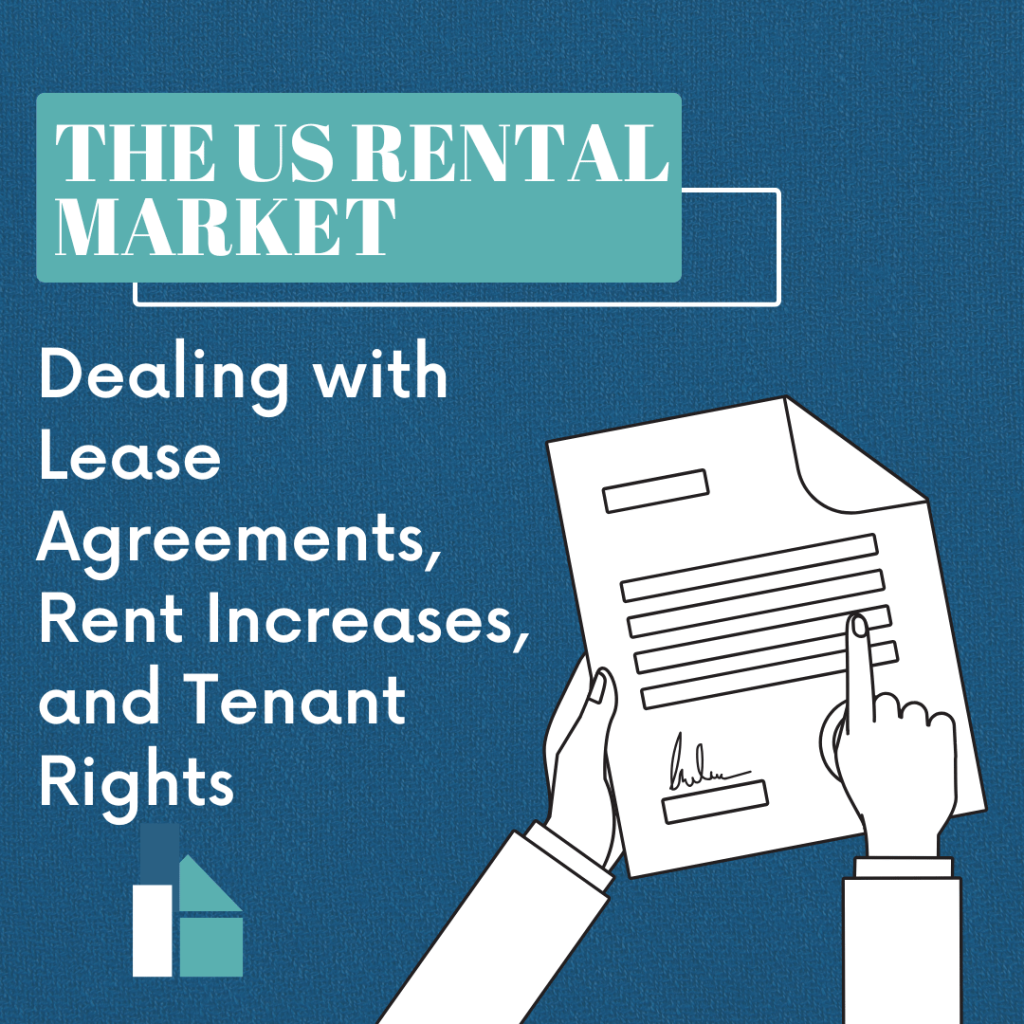The US Rental Market: Dealing with Lease Agreements, Rent Increases, and Tenant Rights

Advertisements
For millions of Americans, renting is not just a temporary housing solution; it’s a fundamental part of their lifestyle and financial strategy.
Whether due to job mobility, financial flexibility, or simply personal preference, the U.S. rental market is a vibrant and essential sector of the housing economy.
However, navigating this market effectively requires a solid understanding of lease agreements, common practices regarding rent increases, and, crucially, your fundamental rights as a tenant.
Being an informed renter is paramount to protecting your financial well-being and ensuring a stable living situation.
Renting vs. Buying: A Foundational Decision
Before diving into the specifics of the rental market, it’s worth briefly considering why one might choose to rent over buy in the U.S.:
- Flexibility: Renting offers greater mobility, ideal for those who anticipate job changes, relocations, or simply prefer not to be tied down to a single location.
- Lower Upfront Costs: Buying a home typically requires a substantial down payment and closing costs, whereas renting usually only demands a security deposit and the first month’s rent.
- Reduced Responsibility: Landlords are generally responsible for major repairs, maintenance, and property taxes, relieving tenants of these often-costly burdens.
- Predictable Monthly Expenses: Beyond rent, utility costs, and renters’ insurance, monthly housing expenses are largely fixed, offering a degree of budgetary predictability.
While homeownership builds equity, renting offers flexibility and fewer immediate financial obligations, making it a viable and often necessary choice for many.
Understanding Lease Agreements: Your Legal Contract
The lease agreement (or simply “lease”) is the most critical document in the rental process.
It’s a legally binding contract between you (the tenant) and the landlord (or property manager) that outlines the terms and conditions of your tenancy.
Read every single clause carefully before signing.
Key Components of a Lease:
- Rent Amount and Due Date: Specifies the monthly rent and the day it’s due.
- Lease Term: The duration of the agreement. Most common are fixed-term leases (e.g., 6 months, 1 year, 2 years), providing stability but making early termination costly. Month-to-month leases offer flexibility but often come with higher rent and less stability.
- Security Deposit: An amount (typically one to two months’ rent) held by the landlord to cover potential damages beyond normal wear and tear, or unpaid rent. Rules for its return are often state-specific.
- Utilities: Clarifies which utilities (e.g., water, electricity, gas, trash, internet) are included in the rent and which are the tenant’s responsibility.
- Pet Policy: Details if pets are allowed, any breed/weight restrictions, and potential pet fees or pet deposits.
- Maintenance and Repairs: Outlines who is responsible for what. Generally, landlords handle major structural issues and appliance repairs, while tenants are responsible for keeping the unit clean and reporting issues promptly.
- Occupancy Limits: States how many people can legally reside in the unit.
- Rules and Regulations: Covers things like noise policies, parking, use of common areas, and subletting.
- Early Termination Clause: Crucial if you anticipate needing to move before the lease ends. It details penalties (e.g., paying remaining rent, losing deposit).
Navigating Rent Increases: Expecting the Unexpected
Rent increases are a common aspect of the U.S. rental market, especially in competitive urban areas.
Understanding how and when your rent can be raised is key to financial planning.
- Lease Terms Dictate Increases: For a fixed-term lease, your rent cannot be increased until the lease term expires, unless specifically stated otherwise in the lease (which is rare and should be viewed with caution).
- Notice Period: Landlords are generally required to provide written notice of a rent increase. The required notice period varies significantly by state and local laws, typically ranging from 30 to 90 days. For month-to-month leases, the notice period usually mirrors the payment period (e.g., 30 days).
- Rent Control/Stabilization: A limited number of U.S. cities and states have rent control or rent stabilization laws (e.g., New York City, San Francisco, some areas in California, Oregon, and Maryland). These laws cap how much a landlord can increase rent in a given period and often dictate the reasons for eviction. Most areas in the U.S. do not have rent control, meaning landlords can raise rent as much as they deem appropriate, provided they give proper notice.
- Negotiation: Don’t be afraid to negotiate a rent increase, especially if you’ve been a good tenant, rent prices in the area have softened, or you can commit to a longer lease term. Highlight your reliability and the costs for the landlord to find new tenants.
Renters’ Rights: Your Protections Under U.S. Law
Knowing your rights as a tenant is your most powerful tool in the rental market.
While specific laws vary by state and municipality, several federal and common law principles protect tenants.
- Fair Housing Act: This federal law prohibits discrimination in housing based on race, color, religion, sex, disability, familial status, or national origin. Some states and cities also add protections for sexual orientation, gender identity, marital status, or source of income.
- Right to a Habitable Living Space: Landlords are generally obligated to provide and maintain a safe and livable premises. This means the unit must meet basic health and safety standards, have functioning utilities (water, heat, electricity), and be free from severe infestations or structural defects. This is known as the implied warranty of habitability.
- Right to Privacy: Landlords typically cannot enter your rental unit without proper notice (often 24 to 48 hours, except in emergencies). Your lease and state laws will specify the notice period and permissible reasons for entry.
- Security Deposit Rules: States have specific laws governing security deposits, including how much a landlord can charge, where the deposit must be held (e.g., in an interest-bearing account), how quickly it must be returned after move-out, and the allowable deductions. Landlords must often provide an itemized list of deductions.
- Eviction Process: Landlords cannot simply lock you out or turn off utilities. They must follow a strict legal eviction process, which involves serving notice, filing a lawsuit in court, and obtaining a court order.
- Right to Repairs: If a landlord fails to make necessary repairs that affect habitability, tenants generally have the right to withhold rent (placing it in an escrow account), pay for the repairs themselves and deduct the cost from rent (subject to specific state rules), or break the lease. Always consult local tenant laws before taking these actions.
Always document everything (photos, written communication, certified mail) if you encounter issues with your landlord.
Tenant Responsibilities: Upholding Your End of the Bargain
Being an informed tenant also means understanding and fulfilling your responsibilities:
- Pay Rent on Time: This is your primary obligation. Late payments can result in fees, negatively impact your credit score, and be grounds for eviction.
- Maintain the Property: Keep the rental unit clean, dispose of trash properly, and avoid causing damage beyond normal wear and tear.
- Adhere to Lease Terms: Follow all rules outlined in your lease agreement (e.g., noise rules, guest policies, pet rules).
- Give Proper Notice to Vacate: If you plan to move out at the end of your lease term, you must typically provide written notice (e.g., 30 or 60 days) as stipulated in your lease.
Related content

Best High-Yield Savings Accounts in the US in 2025

Best Credit Cards with No Foreign Transaction Fees: Ideal for Frequent Travelers

The Credit Card Churning Phenomenon in the US: Is It Legal? Is It Worth It? What Are the Risks?

The Complete Beginner’s Guide: How to Use Your First Credit Card in the US Responsibly

0% APR Credit Cards: How to Take Advantage and What Traps to Avoid
